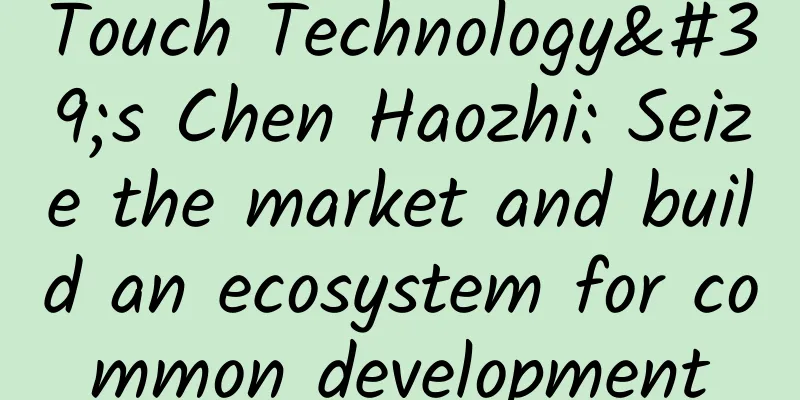Apple's Growth in China from a Foreigner's Perspective

|
Apple has identified Greater China (including the mainland, Hong Kong, and Taiwan) as its main growth center. In order to understand Apple's development in China, AppleInsider, a website focusing on Apple news, sent reporters to visit Hong Kong, Taiwan, and Guangdong Province, and stayed in each of these places for a week for in-depth observation. The following is what the foreign media reporter saw in Shenzhen: Located on the southern edge of China's Guangdong province, Shenzhen is China's fastest-growing city. It is separated from its southern neighbor Hong Kong by a body of water, home to at least 12 million people. Unlike Hong Kong, however, Shenzhen was originally a quiet fishing village. It was not until 1979 that it became the forefront of China's exploration of a market-driven economy. Designated as one of the "special economic zones," it was opened to foreign investment, allowing international and local companies to trade and invest freely. Shenzhen's corporate income tax is only 15%, lower than Hong Kong's 17% and other places' 33%. In comparison, the US corporate income tax is usually 34% to 35%, but most large companies pay an average effective tax rate of only 12.5%. Apple claims that its effective tax rate in the US is more than 26%, while Google and Microsoft pay 15.7% and 19% respectively, and Samsung pays only 12%. Since China adopted a more pragmatic and open economic policy, Shenzhen has rapidly transformed from a small fishing village into a modern metropolis. It is full of vitality and foreign investment has reached billions of dollars. As one of the fastest growing cities in the world, Shenzhen is not too large, but it is definitely modern enough. After decades of planning and construction, it has huge parks, urban green belts, dense commercial areas and subway networks. It is designed for rapid growth. The whole city has not only wide lanes, but also dedicated bus lanes, bicycle lanes, pedestrian tunnels and overpasses. Subway development witnesses the growth of "China's Silicon Valley" Shenzhen's miraculous growth can be seen in the development of its subway system. Construction of the subway only began in 1999, and the first subway line was put into operation only 10 years ago. But today, Shenzhen has more than 130 subway stations and a subway mileage of more than 160 kilometers. By 2030, Shenzhen's subway is expected to be 719 kilometers long, connecting the entire city and even Hong Kong.
Since these subway systems are all brand new, the stations are very clean and have a modern feel. There are elevator-like doors to prevent anyone from getting on the tracks, toilets at every station, and many stations have X-ray machines to scan backpacks and luggage for safety. They run very efficiently and there is little sense of inconvenience. By comparison, San Francisco started construction of its 2.7-kilometer Central Subway project five years ago, and is expected to add only four stations. There are still no plans to connect the initial section of the subway to North Beach, let alone future expansion plans. But the project is expected to provide service to Chinatown in 2019. So far, the budget for the subway project has exceeded $1.5 billion, making it one of the most expensive subway projects in the world. In addition, San Francisco now has only 8.8 kilometers of subway, which is unreliable, crowded, often delayed by people jumping on the tracks, and all the bathrooms in the subway stations have been closed. As a result, many elevators are not working because they are blocked by human waste. By 2020, the Chinese government plans to spend $13 billion to extend the Shenzhen subway by another 160 kilometers and add 102 new stations. This means that Shenzhen's growth and business activities will continue to accelerate as people travel faster and more conveniently. In most innovative, wealthy and successful business districts in the United States, most office workers waste a lot of time sitting in the car every day. Apple and Shenzhen Manufacturing With foreign capital pouring into Shenzhen, coupled with abundant labor and the Chinese government's strong support for infrastructure, Shenzhen quickly became a manufacturing center. In 2001, when Apple was manufacturing laptops and iPods, it had almost no choice but Taiwan's Hon Hai Group. Since 1988, Hon Hai has begun to establish Foxconn Technology Group in Shenzhen Special Economic Zone. In order to focus on domestic silicon chip manufacturers, Intel also handed over its motherboard business to Foxconn. In addition, major companies including BlackBerry, Cisco, HP, Dell, Motorola, Nokia, and even Japan's Sony, Nintendo, Toshiba and Taiwan's Acer have also handed over manufacturing contracts to Foxconn.
This is not a question of cheap labor, but after more than 30 years of massive investment, Shenzhen has formed a complete supply chain to support large-scale manufacturing activities, which cannot be replicated in the U.S. While China has built a large number of roads, subways, highways and large commercial areas, the U.S. is hindered by maintaining existing infrastructure and canceling public transportation projects due to political will. In 2013, Google's Motorola Mobility announced an ambitious plan to assemble the Moto X smartphone in the United States. But even with limited production and the full support of Google's capital, the plan still failed, with losses of billions of dollars. Ironically, Motorola Mobility was eventually acquired by a Chinese company. Apple has recently emphasized that it will use domestic resources to manufacture various components, including building display films in Kentucky, producing processors in Texas, and other local suppliers to provide it with various components. Apple also uses domestic factories to build a limited number of Mac Pros and continues to assemble customized Macs in California. In addition, Apple also funded the construction of a sapphire factory in Arizona, but it failed and was replaced by a data center. However, the United States still cannot mass-produce iPhones and iPads because the United States lacks a large number of available skilled assembly workers and industrial engineers, and does not have the infrastructure to support the construction of a large component supply chain. Apple's WAPI War It is much easier to manufacture products in China than to sell them. When Apple started producing iPhones in 2007, it negotiated with state-owned operators including China Mobile, but the two sides failed to reach a cooperation agreement for several years because China refused to share revenue and control applications proposed by Apple. In the summer of 2008, Apple opened its first store in Beijing, but there were no iPhones for sale. In November, China Unicom agreed to start selling a 3G version of the iPhone without WiFi. China has banned the use of standard 802.11 WiFi for security reasons since 2004, and the introduction of the WAPI wireless standard will help China control emerging markets at home without having to pay royalties to Western intellectual property owners. To sell products using WAPI-style wireless networks in China, Apple needs to select partners among local Chinese manufacturers, because Western companies are not allowed to see the details of wireless network specifications. This makes WAPI a mandatory technology that can effectively restrict trade, force foreigners to manufacture products in China, and enhance the country's export capabilities. At the same time, this move can also increase the advantages of the country's emerging technology industry. But the genuine iPhones Apple provided to China Unicom did not support WiFi or WAPI standards. In the short term, this seemed to be a losing strategy, and Apple's product sales were not very good. However, the demand for iPhones among wealthy Chinese people led to an extremely prosperous "gray market" through Hong Kong. These genuine iPhones not only supported WiFi functions, but also bypassed the tax collection process. This, coupled with Apple's iSO operating system's refusal to accept WAPI as a parallel standard for WiFi, prompted China to abandon its WAPI single standard policy. At that time, it happened to be when Apple released the iPad. Apple eventually received a license to sell iPhones that supported WAPI and WiFi, a move that rapidly increased Apple’s revenue in China, with iPhone sales increasing from a few thousand units per year to more than 2 million. Apple opens stores like crazy in China Four years after the iPhone was launched, Apple has opened 11 stores in China and started selling the iPhone 5. In July 2010, Apple opened its second store in China. This flagship store in Pudong, Shanghai, has a unique glass entrance. In September, Apple began selling iPads in China with standard WiFi support. In September 2011, Apple opened its second store in Shanghai and its first store in Hong Kong. This store is only 1,500 kilometers away from Apple's main production base for mobile phones and iPads in Shenzhen. In early 2012, Apple's three-year exclusive agency agreement with China Unicom expired, and Apple and China Telecom (Weibo) also became partners. Like Verizon in the United States, China Telecom uses CDMA networks. For this reason, Apple launched the CDMA iPhone 4 in early 2011 in cooperation with Verizon, and then launched the iPhone 4S in October of that year in cooperation with Verizon and Sprint. In early 2012, the first iPhone with a retina screen began to be sold in China.
In the winter of 2012, Apple began to rapidly add retail stores in Greater China, including two stores in Hong Kong, one in Beijing, the first store in Shenzhen, and the first store in Chengdu. These stores were all opened during the 2013 Chinese New Year. The opening of five flagship stores in a short period of time, including stores in two new cities, is particularly noteworthy because Apple fired John Browett, its retail chief, who had only been in office for seven months. Prior to this, Apple's retail business had been operating autonomously for more than a year without a chief at the helm. Angela Ahrendts returned to China to help accelerate Apple store openings. After the launch of the iPhone 5c and iPhone 5s, Apple opened two more stores in Greater China, including the fourth store in Shanghai and the fourth store in Beijing, both of which opened during the 2014 Spring Festival. At this time, Apple's retail business still had no head assigned. No doubt when Apple poached Burberry CEO Ahrendts in late 2013, CEO Tim Cook was thrilled. Ahrendts took over Apple's retail business in the spring of 2014 and presided over the opening ceremonies of two new stores in China last summer, including the first store in Chongqing and the first store in Wuxi near Shanghai. Last quarter alone, Apple opened six retail stores in China, including the first store in Zhengzhou, the first store in Hangzhou, the second and third stores in Chongqing, the first store in Tianjin, and the first store in Shenyang. These activities led to Apple opening 20 more stores in China during the 2015 Spring Festival. Shenzhen and Apple Store The Shenzhen Apple Store is located near Yitian Holiday Plaza. Even though I arrived a few minutes before the store closed, the store and the plaza were still packed with people. I first visited here in the hope of getting a local SIM card for my phone. Unlike the Hong Kong Apple Store, which sold me a very cheap SIM card that provided local calling service and a week of unlimited data for my iPhone 6, the Shenzhen Apple Store required me to buy a SIM card from a local operator. When buying a SIM card in China, you must show your passport.
Shenzhen is very different from what I imagined Chinese cities to be. I think it is more like San Diego, close to the coast, with a mild climate and no serious pollution problems. Other reasons why Shenzhen is not like Chinese cities for me include that it is a "melting pot" where you can see all kinds of foreigners. Although it is not the United States or the United Kingdom, it looks the same. Given that Shenzhen's rapid development has only been 30 years, many buildings were built after Apple launched the iPhone in 2007, so it is difficult to define who is considered a "local". I began to doubt many negative reports about Shenzhen, including accusing Apple of enslaving minors to manufacture various products in Shenzhen, which locals cannot afford. But in fact, almost everyone who takes the subway has a smartphone, and the proportion of people who own iPhone 6 is very large. (Fengfan) |
<<: The most undesirable bug in Android: No fix in sight
>>: Mobile Web and Apps: Which is the Future?
Recommend
iOS 9 Learn more every day Day 1: Search API
Prior to iOS 9, Spotlight could only search for a...
Google will add privacy information to iOS apps as soon as this week
On Wednesday, Google announced that it would add ...
What to do if you have too much lucky money? Do you know how to withdraw money from WeChat without handling fee?
[[382126]] The long-awaited Spring Festival holid...
GlobalData: Covid-19 will not slow down 5G deployment
Data analysis company GlobalData said that despit...
What do Arctic methane bursts mean? What impacts will it have?
The Arctic methane burst refers to the fact that ...
The world of mini programs and how to operate them
1) The world of mini programs /direct services Th...
International Polar Bear Day: As sea ice melts, where will they go?
February 27th of every year It's Internationa...
Amazon Fire's ambition is not only to be an e-commerce company, but also a platform
Back in January 2007, Steve Jobs released the fir...
The United States develops a new type of button battery: It is safe for children to swallow it
Children are naturally curious, and there are oft...
How are cat poop coffee and decaffeinated coffee made? Four reasons for coffee
What are the basic categories of coffee? Big-frui...
China Passenger Car Association & CAM: Passenger car market product competitiveness index is 90.5 in April 2022
The Automobile Market Research Branch of the Chin...
Traditional cultural knowledge supporting Qingming Festival: the structure of the underworld!
Mixed Knowledge Specially designed to cure confus...
Catching up with Ferrari, BAIC New Energy ARCFOX-7 has a peak torque of over 1,000
According to official news from BAIC New Energy, ...
Free lunch is not delicious. Actual combat 360/Tencent free upgrade to Win10
Windows 10 has been officially released. I believ...









